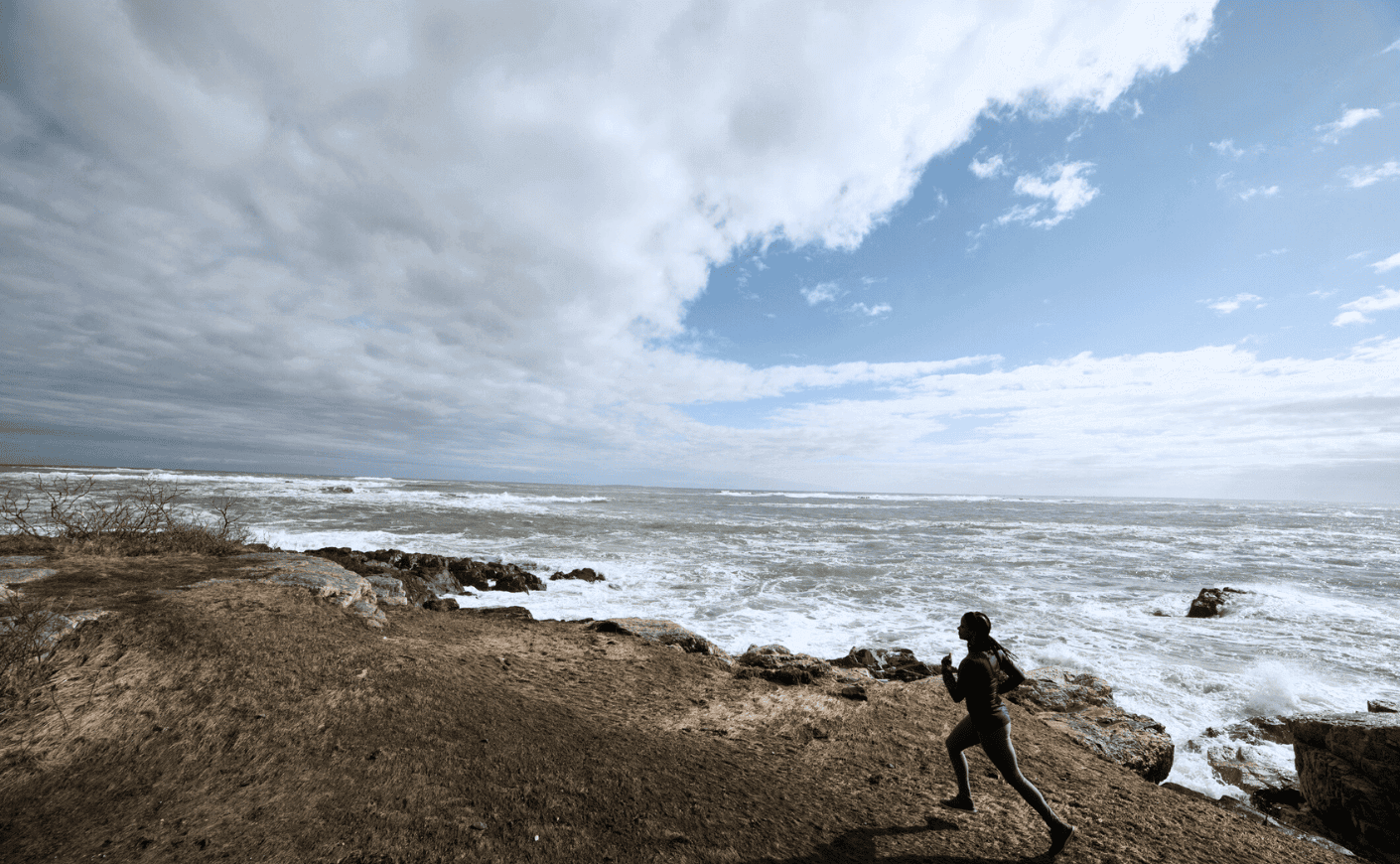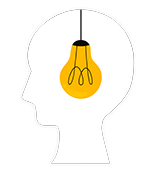Amy Griffin was a dedicated runner and self-described perfectionist for decades of her life, from her childhood in Amarillo, Texas through her life in New York, becoming a mother, and building a thriving career. (She was named one of TIME’s 2025 Women of the Year.) But after a physical injury sidelined her fitness routine, Griffin had to reassess what her rigid habits said about her emotional state — and what in her past she might be shielding from her own view.
Here, in an excerpt from her new memoir The Tell, Griffin explains how her journey toward introspection — and addressing her long-buried trauma — began.
I ran. I ran in the mornings and in the afternoons, and I ran at night. I ran on the dirt roads through Palo Duro Canyon, in the Panhandle of Texas, where I grew up, jumping over the cattle guards and dodging rattlesnakes, to the pasture where the horses roamed free. With no one around, I felt free too, like I’d arrived at a place where nobody could touch me. You could see for miles out to the walls of the canyon in the distance. I loved being in motion, and I was proud of the mechanics of my body. The sun would set over the mesa, turning the sky golden, then blue. The fireflies would come out. Bullfrogs croaked in the distance. And I ran.
I ran at summer camp and around the track at a high school in Oklahoma when I visited my grandparents for Thanksgiving. I ran in college, on the lawn, up the rotunda steps, and in and out of the serpentine garden pathways. I ran in New York City, where I moved after school, along the West Side Highway at night, although I knew it was dangerous. After I was married, I ran in Central Park nearly every morning, while the world was still asleep, dawn just breaking over the tree line. Everyone else who was running in the park at that hour had the same furious intensity as I did. We were the dedicated ones, the ones who would make it out for a run under any circumstances, no matter how hard it was raining or snowing.
I ran when traveling all over the world, never mind the jet lag. In Laos, I passed three monks meditating in a pagoda. Their robes were bright orange, simple, and beautiful. The morning light hit them just so. I thought about them as I ran through the open-air market, past wooden bowls and sewn cloth bags, wondering what it would feel like to be that peaceful.
I ran in low-ceilinged hotel gyms on old treadmills. I ran on golf courses. “How many loops did you do today?” my dad would ask when I came home for the holidays. It was important to me to know that when I arrived at breakfast on a vacation with my family, I could say: I already went for a run. I did it.
Did I enjoy it? I did, on some level, but I never let myself ask that question. Running was just something I had to do, something I had always done.
People, sometimes in a vaguely accusatory way, would wonder aloud about my exercise habits. “Do you run so you can eat the chocolate cake?” a friend of a friend asked at a dinner party. She eyed the last bit of whipped cream on my fork as I set it down on my dessert plate. I felt exposed, even though she had misidentified my motivation.
It wasn’t about the cake. I always ate the cake. I ran because I was afraid of what I would feel if I sat still. I was plagued by injuries; I had surgery on my lower back, then eventually on each of my hips. One rainy afternoon several years ago, I went to see a physical therapist that a friend had recommended to me. I was in a rush, bolting through the city to make it to my appointment on time. My nerves were shot by the time I arrived.
The physical therapist’s office was in a fourth-floor walk up; I could see the elevator was rickety, so I took the stairs, as I often did, since I didn’t like confined spaces. As I lay face down on a massage table, the black pleather covered by a thin sheet of exam paper, she pressed her hand onto the left side of my lower back, which made me flinch reflexively. “It seems like you’re doing too much,” she said as we spoke about my lifestyle. Her voice was soft and gentle. “Do you always move this fast?”
“I don’t know,” I said.
“Your body is starting to break down,” she said. “I think today we should take it easy. See how your body responds to gentle stretching and stillness.”
“No,” I said. “I need to move.”
I became aware of a heavy, nauseated feeling in my stomach. There was a hollowness in my head, a vague buzzing in my ears.
She had observed something in me that I could not see myself.
“You’re not listening to yourself,” she said. “There’s something your body is telling you that you don’t want to hear. What is it?”
Suddenly I felt tight, zipped up, locked away. I did not have an answer for her, or if I did, I knew that I could not put it into words. She was right, of course; there was something. I looked around the room to distract myself. I studied the books on her shelf — had I read any of them? There was a cup of warm tea steaming beside me, but the air was cold. Sunlight peeked through the window behind her, streaking the floor in bars of light. It looked familiar somehow, like something I’d seen in a dream or a distant memory.
“Amy?” she said. “Are you all right?” I felt wetness on my cheeks. I pressed my hands to my face, which was streaked with tears. She looked concerned. “I’m so sorry,” she said. “I didn’t mean to upset you.”
“No, I’m sorry,” I said. “I don’t know why I’m crying. I’m so embarrassed.” I composed myself and thanked her before heading back out into the bustle of the city. I never went to see her again. Yet I thought about her for years — what she’d asked me, and how it must have felt for her to have this strange woman crying in her space over such an innocuous question.
She had observed something in me that I could not see myself. It was like I had a tell — a giveaway, a gesture, the way poker players do, that indicated I was hiding something. Mine was my need to push harder, to run faster, to keep moving. My fear of slowing down long enough to listen to what my body might say.
She could see that there was something so deep within me that I did not even know it was there, a presence with no name or shape. Not an awareness but instead the absence of awareness. The way it felt to know that there was something about myself I did not know…
What is it like to hide something from yourself? Even after all this time, I cannot explain it. We talk about people being in denial as if it were a choice, a voluntary state. Like you can just snap your fingers and it’s over, easy as waking up. But it’s not like that. Denial is not a switch that can be turned off and on. Denial is a glass case that must be shattered before you realize you were trapped inside it in the first place.
For many years, there were stories I could not tell. Secrets I guarded so tightly that I’d forgotten where I put them. Truths I ran circles around, believing that if I ran fast enough, they wouldn’t catch up with me. I know now that this was an act of self-delusion.
The physical therapist had touched a nerve, but she hadn’t quite asked the right question.
She’d wondered why I was moving so fast — why I couldn’t seem to stop running. For such a long time, people discussed my running. It took up so much space in my life.
And yet nobody ever thought to ask: What are you running from?
From the book The Tell by Amy Griffin. Copyright © 2025 by Amy Griffin. Published by The Dial Press, an imprint of Random House, a division of Penguin Random House LLC. All rights reserved.









